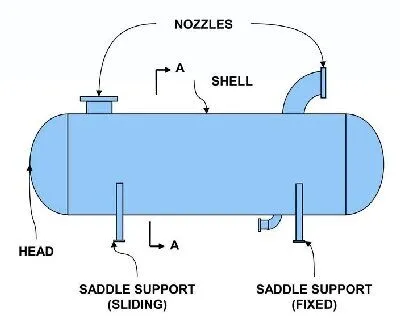Guidelines for Safe Air Storage Tank Operation
Ensuring the safe operation of air storage tanks in an air compressor system is paramount. This involves strict adherence to various precautions, including regular inspections, appropriate tank sizing, pressure gauge management, operational checks, periodic inspections, drainage management, and pipeline integrity checks. By prioritizing these measures when operation an air storage tank, we minimize accidents, create a safer workplace, and uphold our commitment to employee well-being and operational excellence.

1. Tightness Inspection
First and foremost, regular inspections of the tightness of the air supply pipelines and air storage tanks are crucial. This helps to prevent leakage and ensures an adequate supply of compressed air. Regular inspections and maintenance are essential to prevent air leakage from the storage tanks.
2. Determining Tank Size
Secondly, selecting the appropriate size of the air storage tank is paramount. The size of the tank should be chosen according to the compressor's air discharge capacity and pressure. Generally, the tank size should be 20% to 30% of the compressor's air discharge capacity. Additionally, the tank's pressure should exceed that of the compressor to ensure proper operation.
3. Pressure Gauge Management
Proper management of pressure gauges is also indispensable. Pressure gauges should be calibrated and sealed annually to ensure accuracy. Daily checks of pressure gauge readings are essential, especially ensuring they read "0" when there is no pressure. Any abnormalities such as the pointer not returning to zero, unclear dial markings, or breakage should prompt immediate replacement.
4. Operational Checks
Furthermore, regular operational checks are necessary. If any abnormal noises, odors, vibrations, or malfunctions occur during operation, the system should be stopped immediately for inspection and maintenance. Pre-operation checks are also essential to ensure all safety devices and accessories are intact, and lubricating oil meets standards.
5. Periodic Inspections
Periodic inspections are indispensable tasks. Internal and external inspections of air storage tanks and pipe joints should be conducted annually, along with hydrostatic pressure tests, with detailed records maintained. Air storage tanks that fail to pass periodic inspections should not be used to ensure safety and reliability.
6. Drainage Management
Effective drainage management is also vital in air storage tank usage. Tanks should be drained at least twice per shift to remove accumulated moisture, ensuring proper operation.
7. Pipeline Inspection
Lastly, pipeline inspection is crucial. Before opening the intake valve, ensure the pipeline's integrity and absence of abnormalities. Daily checks of the pneumatic pipeline's tightness are necessary, promptly repairing any leaks to ensure the tank's proper operation.
In conclusion, it is imperative to adhere strictly to the aforementioned precautions and conduct regular maintenance and inspections. By prioritizing these measures, the risk of accidents can be minimized, ensuring a safe working environment and enhancing productivity. The safe use of air storage tanks is not just a task; it is a testament to our commitment to safety in the workplace and our dedication to employee well-being.

